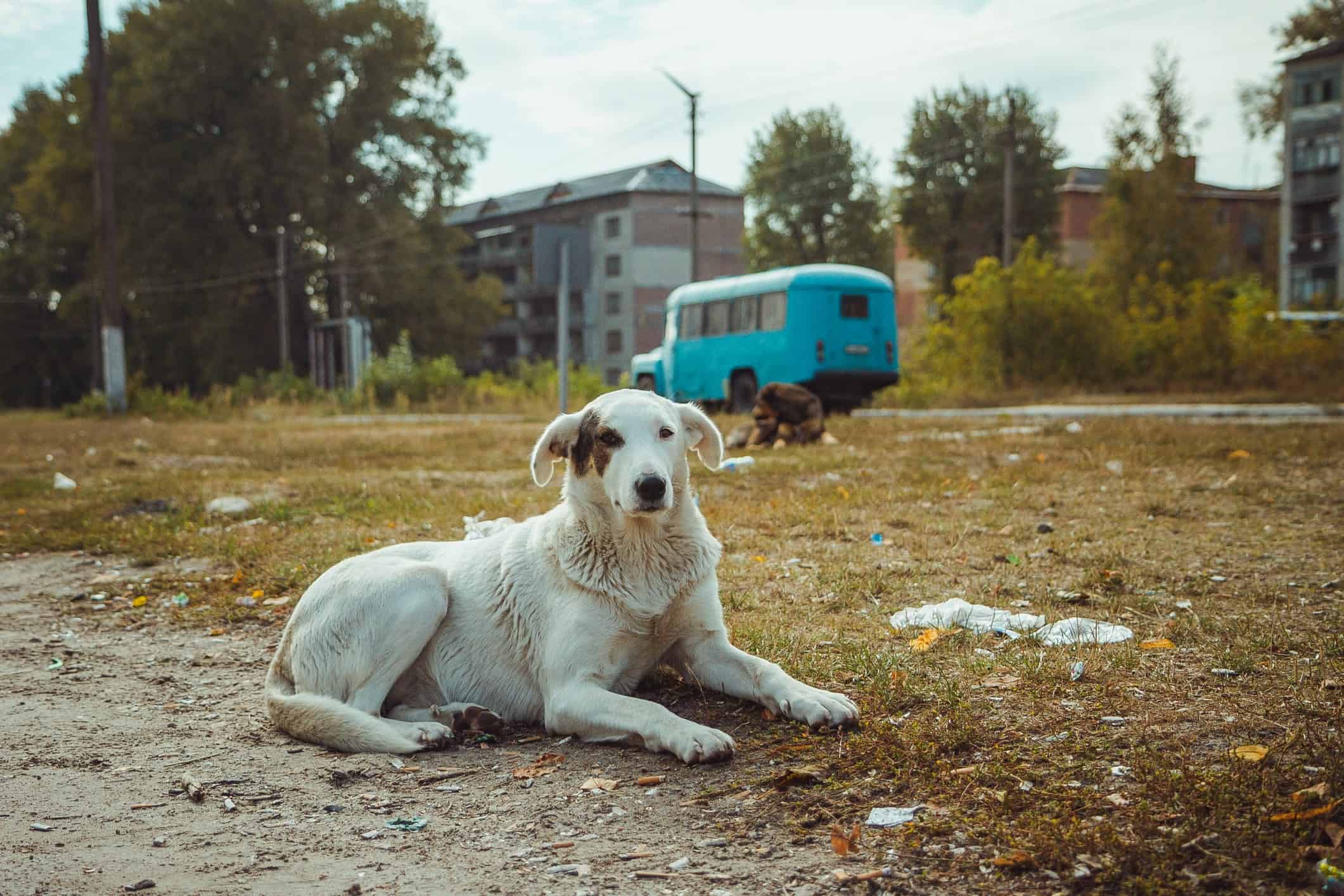You have probably heard of the disaster that occurred at the Chernobyl power plant in 1986. It was a catastrophe that caused thousands of people to experience radiation poisoning, sometimes to lethal levels. People’s hair fell out; they developed cancer, and, for decades, children were born with severe congenital disabilities.
One unlikely consequence of the disaster is that today, there are hundreds of dogs from Chernobyl that are available for adoption. When the nearby city was first evacuated, people had to leave their dogs behind. Soviet soldiers shot many, but those that survived, reproduced. Over three decades later, there are hundreds of stray dogs that live in the Chernobyl exclusion zone, especially within the vicinity of the power plant.
Animal charities, particularly the Clean Futures Fund, are working to make some of these dogs available for adoption, especially among American families. If you thought you had heard everything but had not heard about dogs from a radioactive region being available for overseas adoption, keep reading.

Chernobyl and Pripyat Today Is A Ghost Town In Ukraine
Pripyat is a city in the Eastern European country of Ukraine (formerly the Soviet Union) that is near the Chernobyl plant. Following the meltdown of the nuclear plant that occurred on April 26, 1986, the entire city was evacuated. Today, it is a veritable ghost town, full of abandoned buildings that are overgrown with plants.
There are occasional visitors to Chernobyl. What they see is run-down buildings sprayed with graffiti and wildlife that roam down the abandoned streets. Surprisingly, one of the most frequent sights is young dogs under the age of four years old. Many of these dogs are available for adoption.

Chernobyl Was Evacuated On May 5, 1986
The meltdown of the nuclear power plant began on the night of April 26, 1986. However, the city did not get evacuated until nearly two weeks later, on May 5. During that time, the residents near Chernobyl were subjected to some of the highest doses of radiation in history.
The secretive policies of the Soviet Union were the most significant reason that the evacuation did not begin sooner. Officials in the government attempted to hide the catastrophe as it was unfolding instead of doing what was best for the citizens and warning them of the danger that they faced.
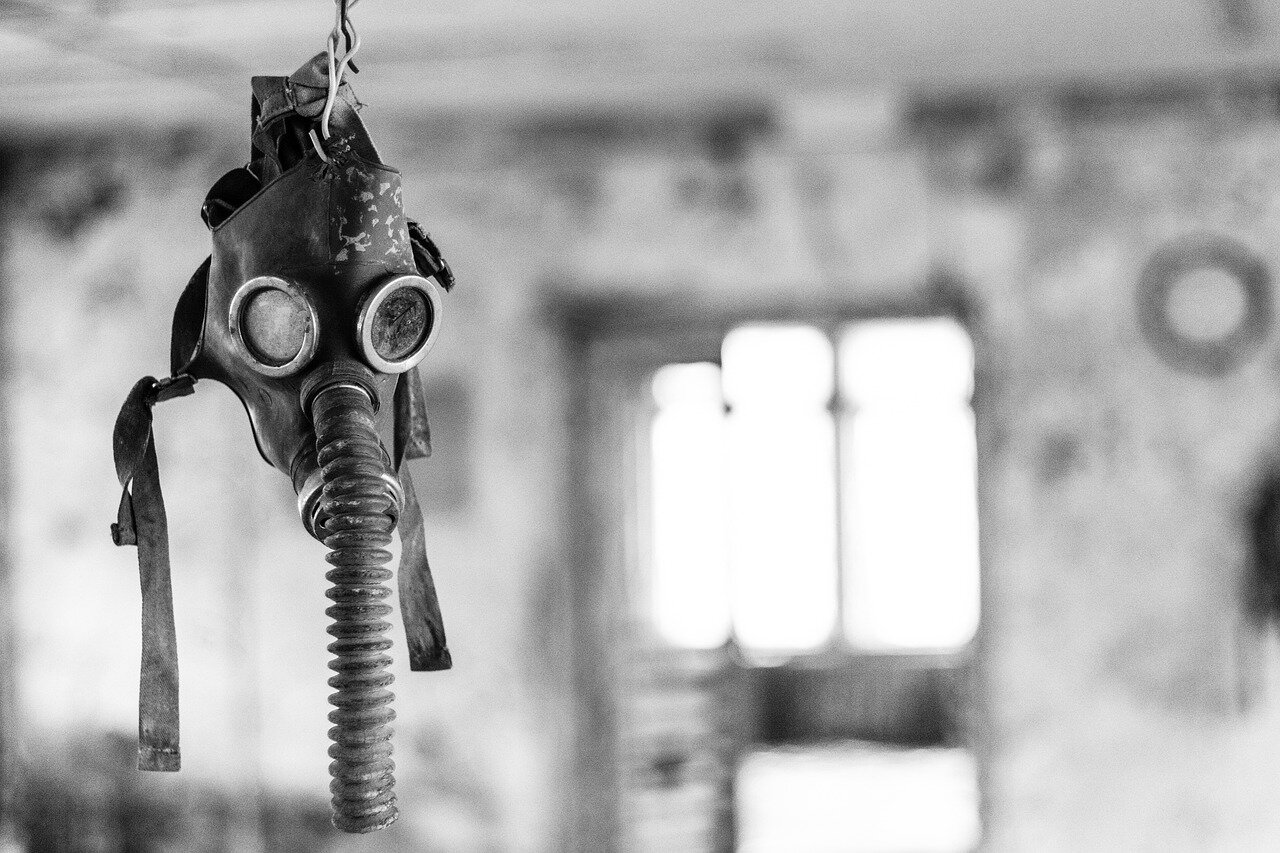
Unauthorized Experiments Caused the Meltdown
On April 26, 1986, some workers at the Chernobyl nuclear plant decided to perform some experiments that had not been authorized. They wanted to test if the reactors would cool with a specific procedure. To complete the process, they had to run one of the reactors on meager power.
There were design flaws in this reactor, so running it on such low power began a runaway thermodynamic reaction. Instead of cooling, the reactor heated up so much that it caused a massive power surge and an explosion inside the plant.
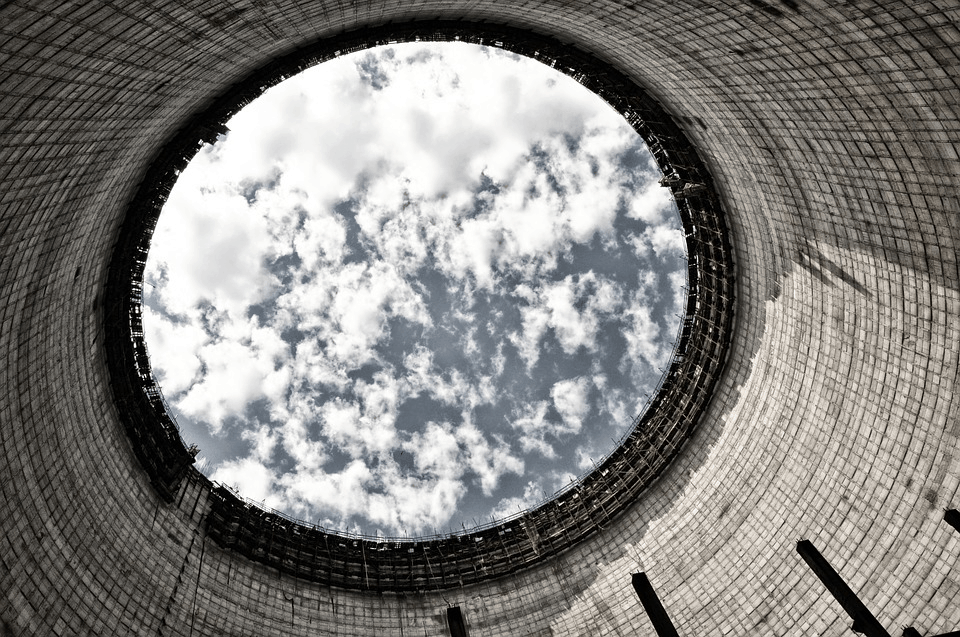
Two People Died In The Initial Explosion
Two of the engineers who were running the procedure died instantly when the reactor exploded. However, this loss of life would be small compared to the enormous damage that would spread across an area that would come to be known as the exclusion zone.
Nuclear waste and runoff would leak into the surrounding environment, poisoning the ground and thereby the entire food chain for the people and wildlife. The radiation in the air would poison people and cause children to be born with severe congenital disabilities. However, for the first few days following the explosion, the government did not even advise people to stay indoors.

A Giant Festival Happened In Kyiv
Five days after the explosion, on May 1, a May Day festival occurred 95 miles away from Chernobyl, in the city of Kyiv. The celebration occurred outdoors and went on as if nothing had happened. Meanwhile, the trees of Kyiv had absorbed so much radiation from the explosion that in the autumn, when the leaves fell, they had to be handled as radioactive waste.
The people of Kyiv who participated in the May Day festival were poisoned by massive amounts of radiation that had blown in from Chernobyl. However, the Soviet authorities were acting as if nothing was amiss. They wanted to pretend that the explosion had not even happened.

The Government Knew The Danger Of The Explosion
In the days immediately following the explosion, the government dispatched a fleet of planes and helicopters to drop over two tons of boron, lead, and other substances that would absorb some of the radiation onto the power plant. They also dispatched soldiers who shovel graphite off of the reactor.
For over a week, Chernobyl was absolutely awash with government activity. The government knew that there was a genuine danger to the people of Chernobyl, but officials did not take any precautions to protect them. By the time the evacuation began, many people would have received a lethal dose of radiation.

As Many As 93,000 People Died In The Disaster
We don’t know exactly how many people died in the Chernobyl disaster. The official Soviet record indicates that only 49 people died, including the two engineers who perished in the initial blast — however, estimates of the number of people who died range from 4,000 to as high as 93,000.
Many of the deaths in the Chernobyl area occurred because of lethal doses of radiation, which can cause cancer, severe congenital disabilities, and many other problems. Children born to people who had been in Chernobyl that spring were born with some of the most severe congenital disabilities in history.

The Soviet Government Lied To The World
One thing that is hard to do is hiding the fact that a giant cloud of radiation is blowing from Ukraine to countries all over Europe. Governments outside of the Soviet Union began trying to find out what had happened, but the secrecy that surrounded the Soviet government prevented them from telling what had happened and possibly getting outside help for dealing with the disaster.
In fact, the day after Chernobyl was evacuated, on May 6, the Soviet government announced that the problem had been entirely contained and that there was no longer any threat. However, the danger is still there, over three decades later. The land is still uninhabitable because of the high levels of radiation that are still present.

The Radiation Was 400 Times Greater Than The Bomb Dropped On Hiroshima
There was so much radiation released at Chernobyl when the nuclear plant melted down that, were people to attempt to farm the ground, the food that they grow would be poisonous. However, the Soviet government continued to tell people that nothing was amiss and that the area was perfectly safe.
In fact, three months after the explosion, the government announced that food grown there was safe to eat. Anyone who ate food that was produced there would have immediately become sick from the high levels of radiation and would probably have died from its effects.
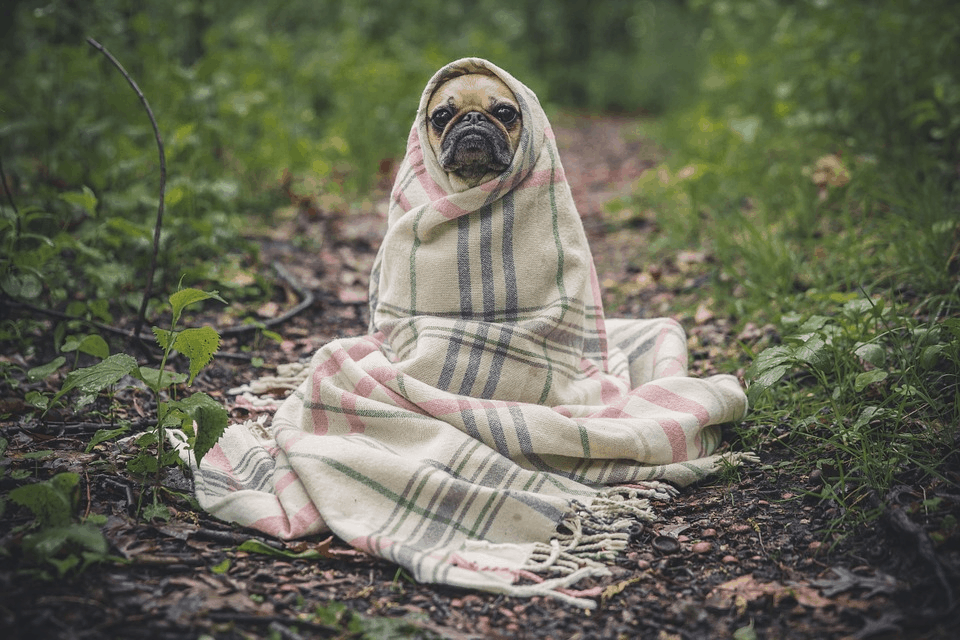
So, Does Anyone Want A Dog?
When the government finally evacuated the people of Chernobyl, it wasn’t like they could pack up their homes and drive to a safe location. No, the people were loaded onto buses with only the things that they could carry. Many of the city’s residents had dogs that they wanted to bring with them, but they were not allowed on the buses.
Some of the dogs attempted to follow their owners onto the buses, but the soldiers forced them back. They had to remain in the radioactive exclusion zone and fend for themselves. Today, there are hundreds of dogs in Chernobyl, most of whom are descended from those that were left behind in the evacuation. Some of these dogs are available for adoption.

Chernobyl Has Become An Animal Sanctuary
The lack of human presence at Chernobyl has allowed animals to thrive there. Humans are the number one predator to many forms of wildlife, and the growth of cities continually pushes animals out of their natural habitats. However, the land in the exclusion zone has been primarily recovered by animals.
In fact, some scientists now view the exclusion zone as one of the largest wildlife sanctuaries in the world. It is home to beavers, otters, catfish, bears, and many other animals that were there before the growth of Chernobyl as an urban area. Oh, and there are also dogs.
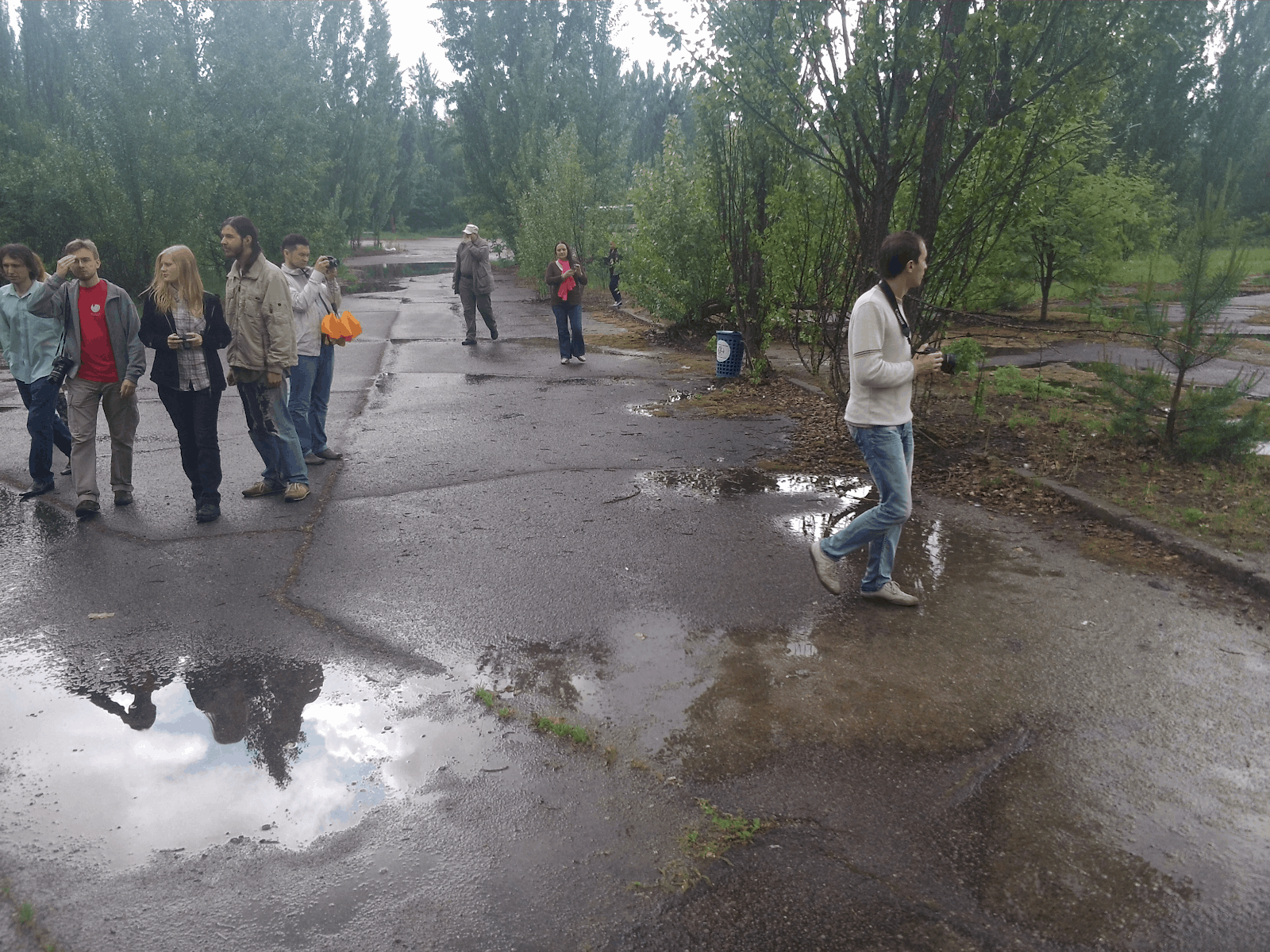
There Are Some People At Chernobyl
Despite the high levels of radiation, the wildlife that has moved in, and the lack of infrastructure and government services, some people live at Chernobyl. Some of these are inhabitants who insisted on returning to their family homes. Some are scientists who are studying the effects of the radiation or the wildlife that is now thriving in the exclusion zone.
Believe it or not, some of the people at Chernobyl are tourists who want to see the desolation for themselves. So then there are animal charities and volunteer veterinarians that care for the animals of Chernobyl, particularly dogs.
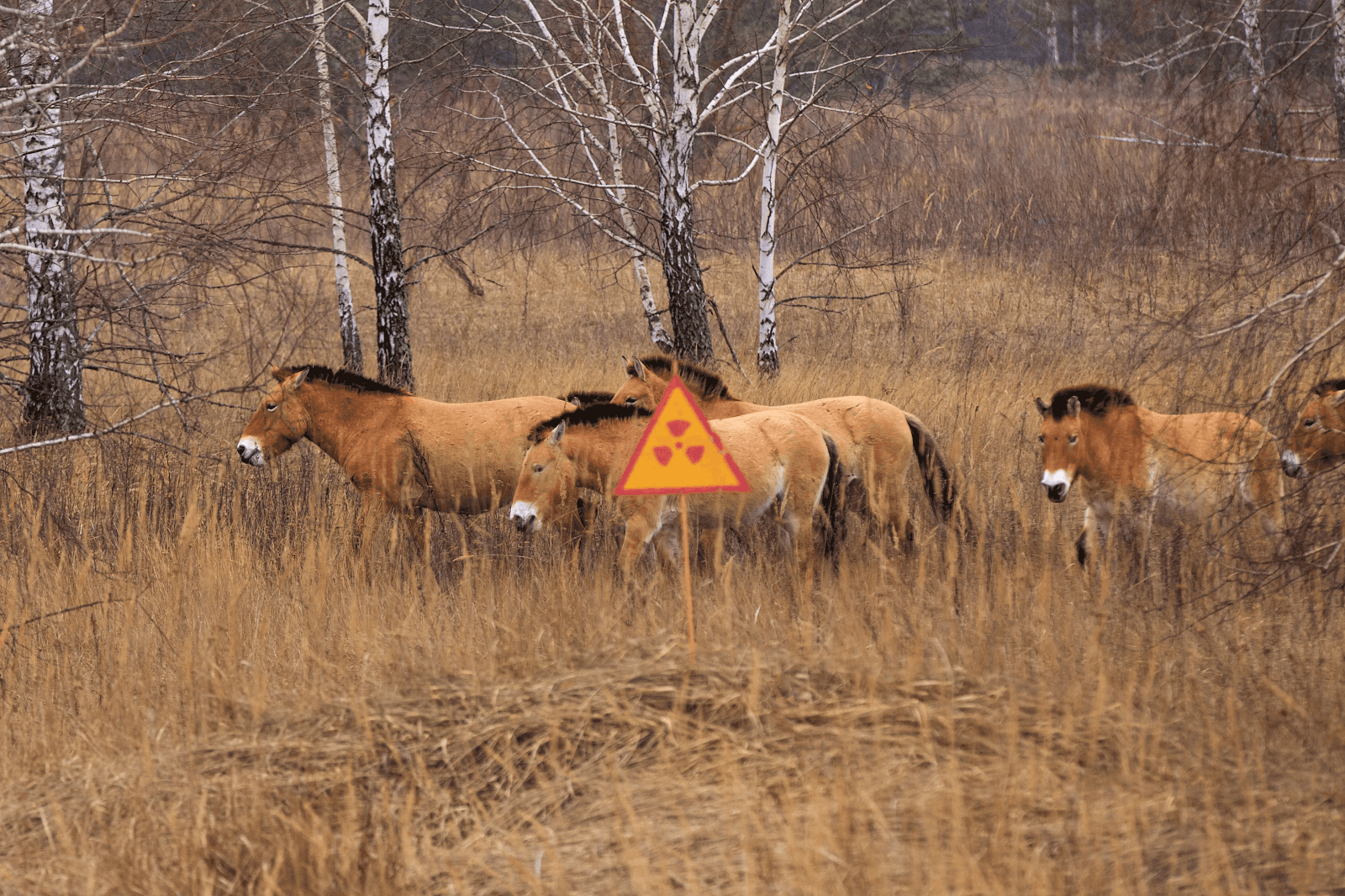
Animals At Chernobyl Have Genetic Mutations
Given the massive doses of radiation present in the Chernobyl exclusion zone, one shouldn’t be surprised to hear that the animals who live there have very high rates of genetic mutations. Lambs may be born with extra legs, and birds may have smaller brains. There are also mutations among the bugs, which could disrupt the growing ecosystems there.
But not all of the mutations are necessarily bad. Some are adaptive mutations that are enabling the animals to thrive in such a hostile environment. However, even with the higher levels of radiation and the presence of variations, the more significant danger seems to be human presence. The lack of humans outweighs the damaging effects of mutations.
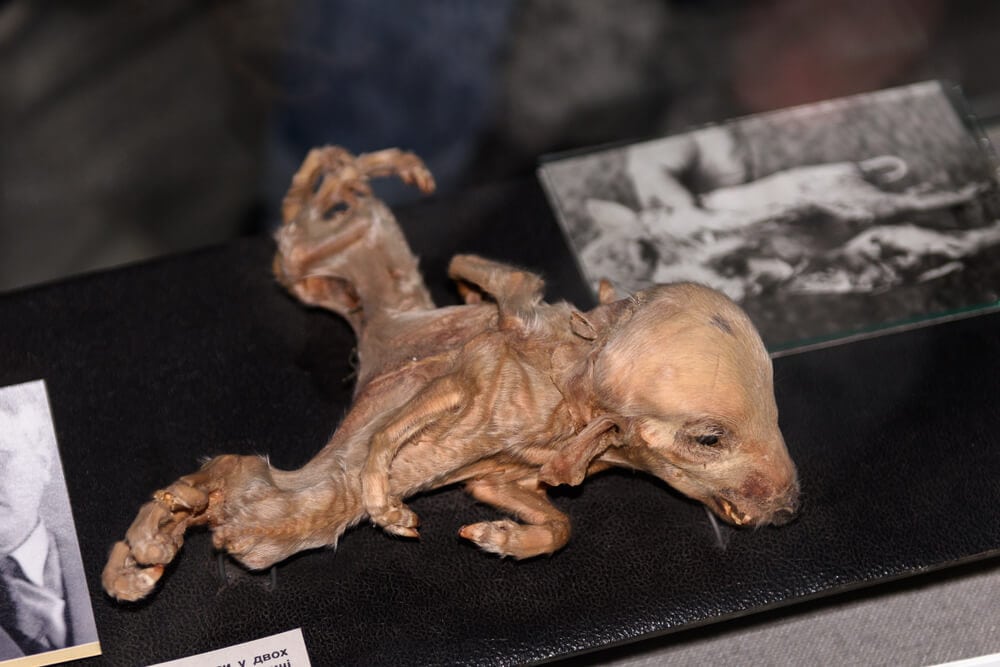
The Animals Have Shorter Lifespans
One effect of the high levels of radiation is that the animals who live there seem to have much shorter lifespans. They still live long enough to reproduce, which enables their species to continue to flourish. However, they live significantly shorter lives than other members of their species outside of the exclusion zone.
One reason is that radiation has permeated every level of the food chain. The plants grow in toxic soil, feeding radiation to the herbivores. When bugs bite them or carnivores eat them, they also ingest radiation. So they just aren’t living as long.
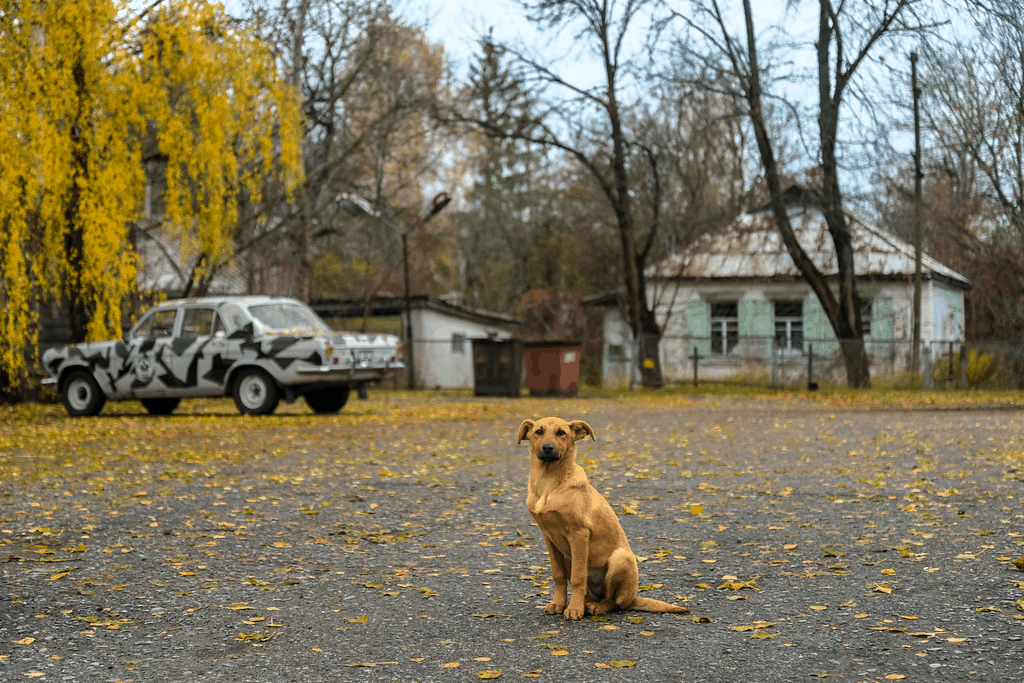
The Dogs Also Have Shorter Lifespans
However, their shorter lifespans don’t seem to have as much to do with the radiation as with the brutally cold winters of Ukraine. Many mammals, like bears, have adaptations to the cold, such as going into hibernation. However, dogs, who have been bred to live alongside humans, don’t have these adaptations.
With sub-zero temperatures and heavy snowfall, the cold winters present a much greater threat to the dogs than the radiation. If they remain outdoors in an unheated environment for too long in those harsh conditions, they won’t survive. In fact, most of the dogs at Chernobyl are under four years old because the cold kills them.
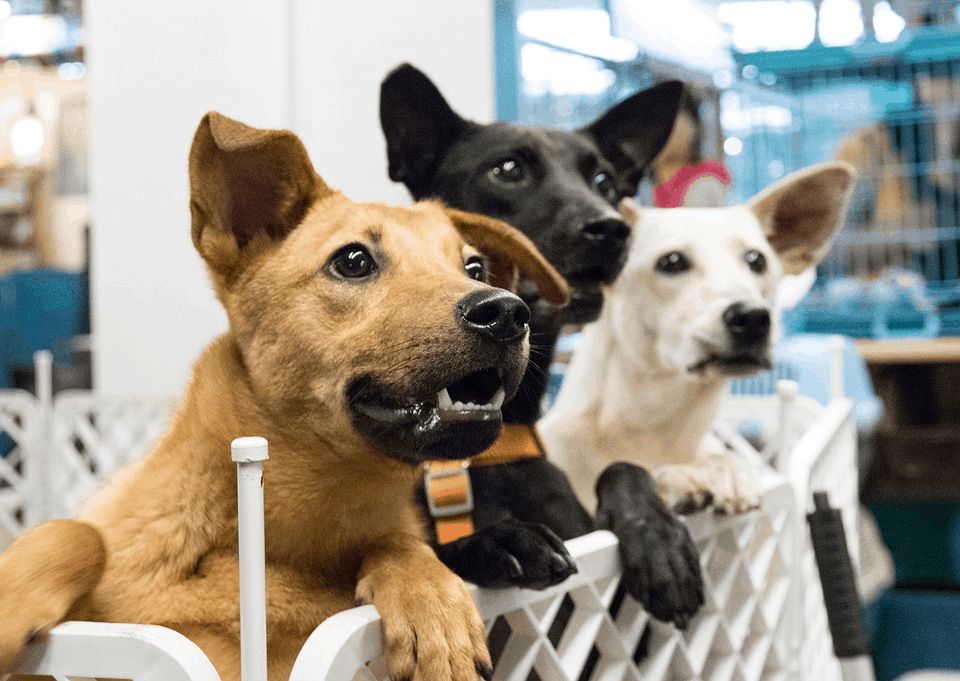
There Are Charities That Look After The Dogs
Clean Futures Fund is an animal welfare organization that works at Chernobyl and the surrounding exclusion zone to care for the dogs there. They send teams to the area every single year to work alongside workers at the power plant. The charity operates a center that cares for about 250 dogs at a time.
The charity workers do what animal welfare organizations would do for stray dogs in any urban environment. They feed them, spay and neuter them, and vaccinate them. They also play with them and even offer them scraps of food from their own meals. The Clean Futures Fund has been in Chernobyl every year since 2016.
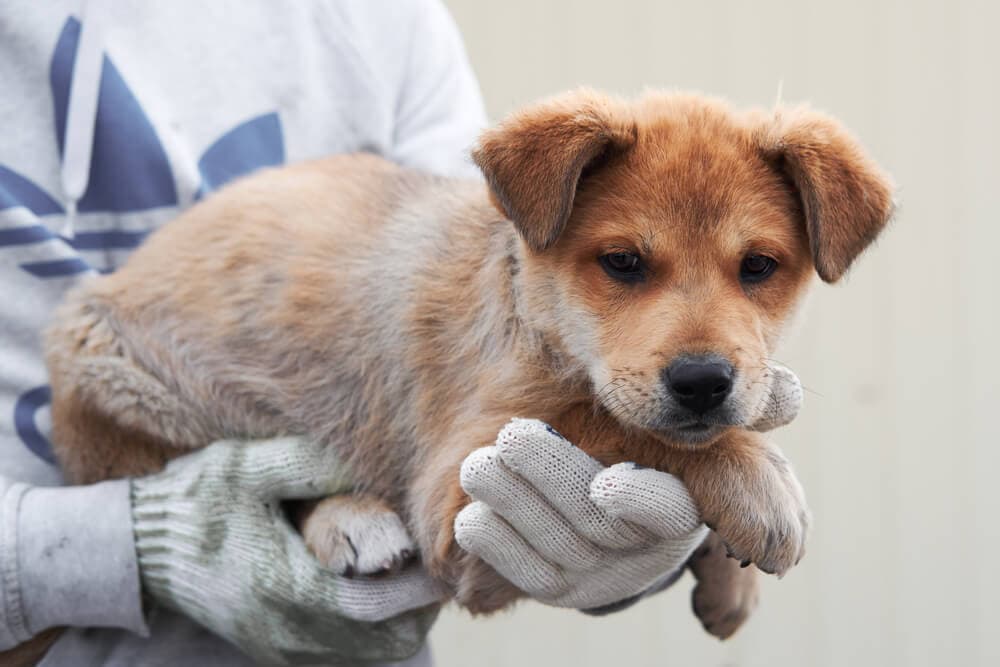
Other Charities Work With The Clean Futures Fund
Four Paws is another animal welfare organization that sees part of its mission as caring for the descendants of the dogs that were abandoned when Chernobyl was evacuated. It has partnered with Clean Futures Fund by sending in veterinarians and teams of concerned individuals to vaccinate, spay, neuter, and care for the dogs.
Working with the stray dogs who roam Chernobyl comes with its risks. One is rabies, as many of the dogs are infected from living alongside wildlife. Another, of course, is the dangers posed by exposure to high levels of radiation.

Soviet Soldiers Tried To Kill The Dogs
When the evacuation of Chernobyl first began in May of 1986 and many dogs were left behind, the Soviet government had a simple solution for dealing with them: send out soldiers to shoot and kill them. Sadly, hundreds of dogs were killed in this manner.
Of course, the soldiers did not kill all the dogs. However, the encroaching wildlife forced them to remain within the urban area that was abandoned in order to survive. Some tried to go back to their owners’ homes, but there was no one there. They especially crowded around the nuclear plant and were cared for by some of the workers.

Today, There Is An Option To Adopt Them
Instead of shooting the dogs, today, there is a much more humane option: adopt them into a loving family that will care for them. The thought of taking a dog exposed to such high levels of radiation and the potential of rabies and other diseases sounds a bit intimidating, but the animal charities that work in the exclusion zone are making the dogs adoptable.
By vaccinating dogs, these charities are decreasing the risk that they will spread rabies. Only dogs that are free from all diseases are available for adoption. Countries will not even allow a dog inside their borders unless they are free from diseases like rabies.

Workers Thoroughly Clean the Dogs
Veterinarians and other volunteers who travel to the exclusion zone to care for these stray dogs take every precaution to protect themselves. They wear protective clothing to reduce their exposure to the high levels of radiation in the environment so that they can care for the dogs without harming themselves.
When a dog receives care by these teams, it is thoroughly washed to remove the radiation contamination from its coat. This process allows the vets to work with the dogs, even play with them, without exposing themselves to unnecessary levels of radiation. It also helps make the dogs adoptable.

Adoptable Dogs Are Free Of Radiation
Cleaning and vaccinating a dog who has spent its life in the Chernobyl exclusion zone is not enough to make the pup available for adoption. For a dog to be eligible for adoption, it has to be decontaminated in an official facility so that it is free of all but trace amounts of radiation.
The dogs spend 45 days in quarantine to ensure that they are entirely free of any communicable diseases and that they are healthy enough for international travel. They have to be able to get the same health certificates as to any other animal that travels into a country like the United States.

A Dozen Chernobyl Dogs Were Brought To The US In 2018
With the help of animal welfare organizations, Ukrainian authorities quarantined about 200 dogs and decontaminated them so that they were available for adoption. They brought about a dozen of the dogs to the US so that they could be adopted into a forever family.
Ukrainian authorities hope to continue the process of clearing dogs for adoption and finding them homes, both in Ukraine and in other countries. With about 250 dogs living in the former power plant and hundreds more nearby, groups like the Clean Futures Fund are setting high goals for getting these dogs into safe and loving homes.

Adoption Is A Permanent Solution
Vaccinating the dogs and providing them with food during the short trips that volunteer workers make is a great start. However, to truly help the dogs, the goal has to be to get them off the abandoned streets of Chernobyl and into permanent families.
Instead of cleaning and vaccinating the same dogs year after year, adoption provides a dog with permanent stability and warmth during cold winters. It also allows the dog to give back to its loving family through unconditional love. Many people are willing to adopt these dogs and make them a permanent addition to their families.

You Can’t Just Visit Ukraine And Bring Home A Dog
Adopting a dog from the Chernobyl exclusion zone is a lengthy process. While these dogs may tug at your heartstrings and make you want to get onto the next plane, there are many protocols in place to ensure both that the dogs are well-cared for in their permanent families and that they are completely healthy.
If you are interested in adopting one of these deserving animals, you will need to do your homework. You will need to make sure that there is room for a dog in your home and that you have the time in your daily schedule to care for it. You will also need to liaise with the appropriate agencies to bring one of these dogs home.

At Chernobyl, People Are Advised To Not Touch The Dogs
If you are keen on visiting Chernobyl and seeing these pups for yourself, be forewarned: visitors to the area are warned not to touch the dogs. Before they go through the decontamination process, they are likely riddled with contamination, which will rub off on people who come into contact with them.
Furthermore, these are stray dogs who are highly susceptible to diseases like rabies and distemper. They may even be aggressive. The rule of basic common sense applies here: approaching a stray dog is always, ALWAYS a bad idea.

Dogs Available Are Under One Year Of Age
The Clean Futures Fund has been the most ardent advocate of adopting out the dogs who live on the streets of Chernobyl. Disease, malnutrition, and the bitter winter cold are all threats to their well-being and cause them to have vastly diminished life expectancies. As previously mentioned, they rarely live for more than four years.
Only the youngest of the dogs, those under one year of age, are eligible for being adopted. One reason is likely because they are less likely to have suffered the effects of radiation than those who have been around longer.

The Dogs Are Tested For Cancer
One of the most common effects of long-term exposure to radiation is cancer. Identifying dogs who have tumors, as well as cataracts and some other malformations, helps rule out those who have absorbed the highest levels of radiation. These dogs are not healthy enough to be adopted, especially adopted out into the United States.
The presence of cancer is an indicator that the dog has suffered extensive genetic damage and may also have a disrupted microbiome inside its gut. The dogs are sedated and observed for signs of cancer and other life-inhibiting effects of radiation.
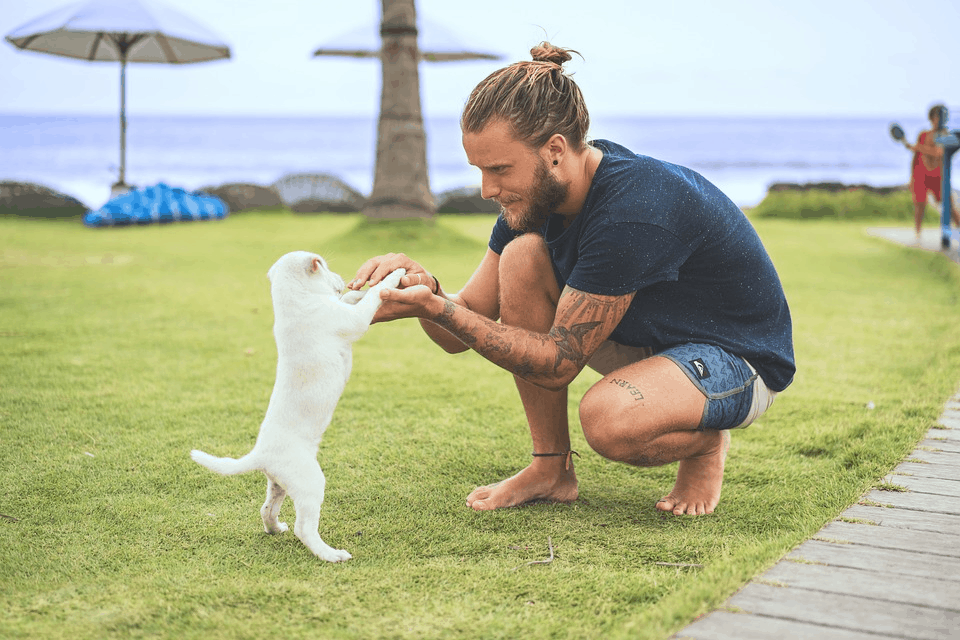
The Dogs Need To Be Rehabilitated
Anyone who has adopted a rescue dog knows that these animals need special care and attention because they have traumas that affect their behavior. Dogs adopted from the Chernobyl exclusion zone are no exception to this rule.
They may not understand that a toy is something that they can play with; they may only be interested in food. The dogs will need to adjust to human contact, so the furry friends may not immediately curl up at the end of your bed every night. While workers at the quarantine shelters are using procedures to help domesticate the dogs, they will need more help in their new families.

Hundreds Of Dogs Will Likely Come Available For Adoption
The Clean Futures Fund, which is working with the Ukrainian government to make the dogs of Chernobyl adoptable by both Ukrainian and American families, has high ambitions. Its director is hoping to have hundreds of dogs go through the decontamination and quarantine process so that they can be adopted.
This is good news for families that have room in their homes and hearts for an animal that can bring them unconditional love and affection. Moreover, it is good news for the dogs who live in incredibly harsh conditions and may not survive the next winter.
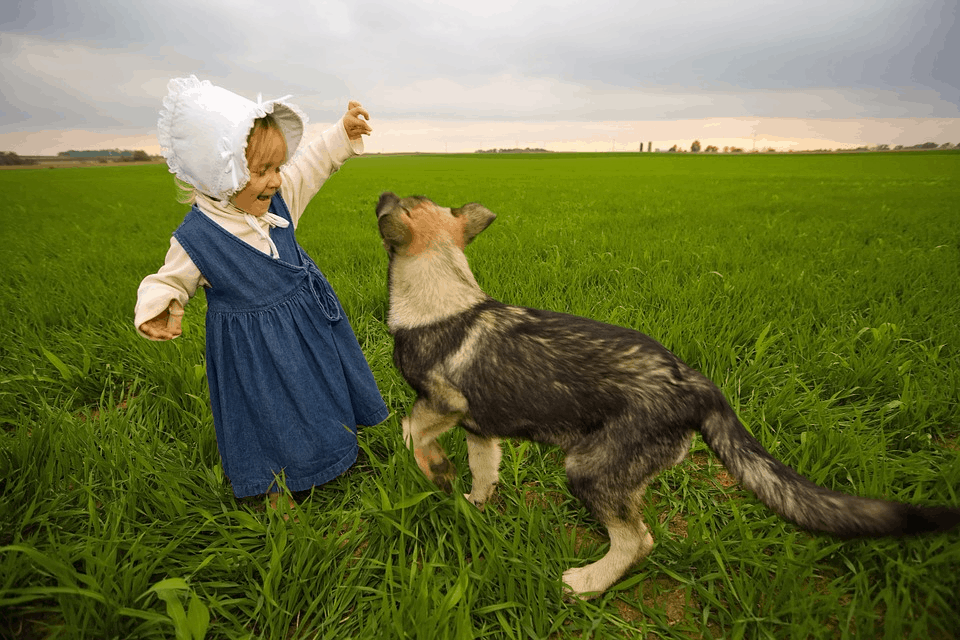
You Can Adopt One Of These Dogs
As news about the Chernobyl dog adoption program is spreading, plenty of people are expressing interest in bringing one of these pups home. You can be one of them by emailing the Clean Futures Fund at [email protected].
Keep in mind that expressing interest in adoption does not guarantee that one of these Chernobyl dogs will curl up at the end of your bed every night. There will likely be a high demand for them, a market that will be higher than the ability to decontaminate, quarantine, and clear them for adoption.
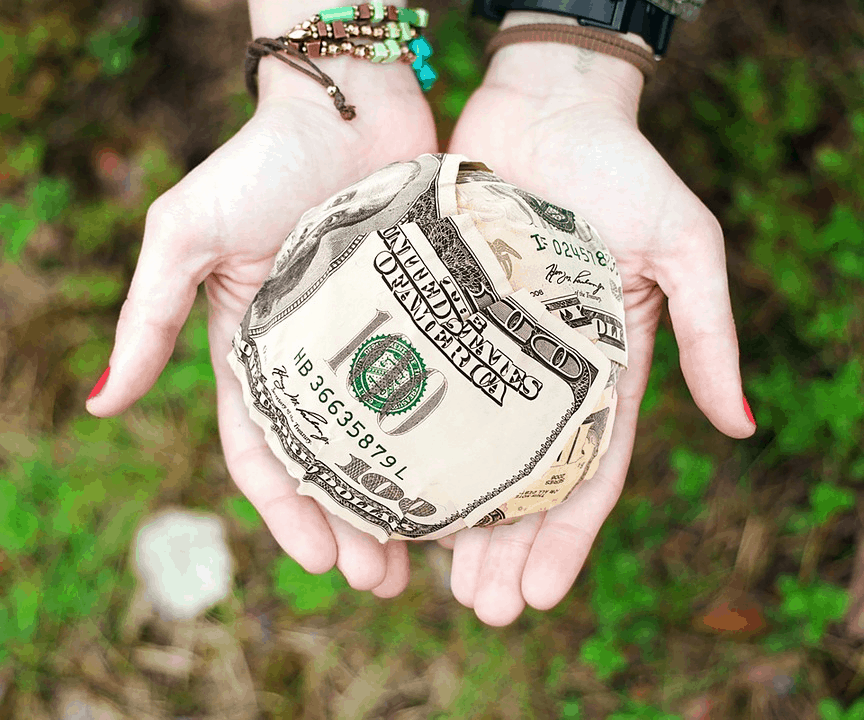
There Are Other Ways You Can Help
Maybe you want to adopt one of these dogs but can barely hope that your name will come to the top of a long waiting list. Perhaps you have compassion for them but don’t have the room or the ability to care for a dog. After all, dogs don’t stay puppies forever, and they require a lot of work and attention throughout their lives.
There are other ways to help these dogs. You can donate and raise money to give to the Clean Futures Fund or another charity that is working to support the dogs of Chernobyl. You can also help dogs more locally, at your nearby animal shelter. The rescue dogs in your hometown are just as deserving as the dogs of Chernobyl.
Where Did We Find This Stuff? Here Are Our Sources:
“Chernobyl: The secrets they tried to bury – how the Soviet machine covered up a catastrophe,” by Kate Brown. The Telegraph. March 9, 2019.
“Chernobyl.” Wikipedia.
“Dogs of Chernobyl.” Clean Futures Fund.
“Meet the Abandoned Dogs Living in Chernobyl,” by Lauren Lewis. World Animal News. August 21, 2017.
“Chernobyl Puppies Going Up for Adoption in the US,” by Jason Daley. Smithsonian.com. May 16, 2018.
“Hundreds Of Dogs And Puppies Live In Chernobyl – And You Can Adopt One,” by Beth Elias. Ranker.

